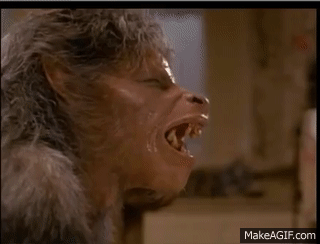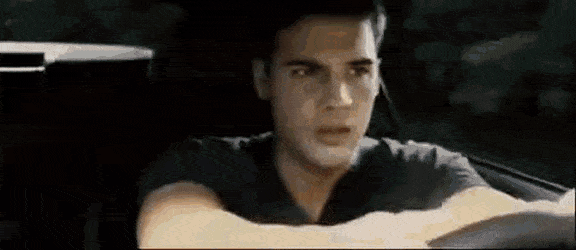#and honestly even when gregory and christophe aren’t kissing (or going to kiss later) I still adore their dynamic!!
Explore tagged Tumblr posts
Note
It's not Gregstophe centric but have you read Consequences to the Grave on ffn? If you have what are your thoughts on it? It's so iconic to me and it shaped so much of how I understand their dynamic and their characters
I HAVE NOT BUT I KNOW OF IT…… one of my old favorite Christophe artists from dA (apatur4iris) drew a lot of art for that fic!!
nowadays, i’m a huge fan of damstophe (or dristophe as i know many others call it). however, back when i first got into south park (aka back when i constantly read fics on ffn), i only moderately liked the pairing. so i didn’t really read fics for them. now that i do like the pairing though, i’ve been meaning to read CttG for months at this point. since it’s on the longer side though (max i like to go for is ~70k and CttG is ~158k words), i keep putting it off 😅
but it really does seem to be THE damstophe fic of all time and if you’re recommending it anon, then maybe i’ll sit down soon and finally get started on reading it 👀
#actually I’m pretty sure I’ve talked about it in a post a while back and how I wanted to read it but hadn’t yet lol#so yeah. maybe this is the prompt I need to get started#and honestly even when gregory and christophe aren’t kissing (or going to kiss later) I still adore their dynamic!!#so i would love to read a fic that explores their characters and does so iconically enough it’s impacted others
4 notes
·
View notes
Text
Blood and Chocolate: An Adaptation in Name Only
Previously: Section 0 – Introduction, Section 1 – The Book
Section 2 – Adaptation Challenges
Preface: I’m writing this section in the aftermath of the Artemis Fowl movie.

(Yikes? Definitely yikes.)
Most of the professional reviews mention the lack of originality, the ineptitude, and the stink of franchise aspirations. However, if you take a look at the audience reviews, you’ll notice a trend: lots of fans of the book are absolutely livid about the adaptation changes.



To the fans of the books, I am so sorry, and I feel your pain because I’ve been there.
An adaptation with only superficial connections to the source material?
An adaptation that almost seems like a deliberate insult to the book?
An adaptation that legendarily misses the point of the original?
I know that rage because I’ve been through it. Blood and Chocolate fans know the pain that Artemis Fowl fans are currently experiencing.
But, why? Why have so many beloved books been butchered in the name of film adaptation? Let’s take a look at the process that took the 1997 Blood and Chocolate novel and turned it into the 2007 Blood and Chocolate movie.
Adaptation History: After its 1997 publication, Blood and Chocolate enjoyed some popularity and acclaim. Unlike later YA behemoths like Twilight, The Hunger Games and Divergent, Blood and Chocolate doesn’t seem to have made an appearance on the New York Times Bestseller’s List, so it’s difficult to quantify exactly how much popularity it enjoyed. Later that same year, MGM optioned the film rights, indicating that, at some point in the future, we could expect an adaptation. No news was heard on that front until 2004, when a screenplay appeared. The US Copyright Office records the document as, “Blood and chocolate; motion picture project & screenplay / Screenplay written by Christopher Landon, with revisions by Jon Harmon Feldman, Leslie Libman and Larry Williams, Christopher Landon and Jeff King, with current revisions by Ehren Kruger.” That’s one original script and six writers working on revisions – none of whom are the original author, Annette Curtis Klause. According to a 2006-ish interview with Cynthia Leitich Smith. Klause was completely out of the loop when it came to the production, stating, “…I’m afraid that if you aren’t Anne Rice, J.K. Rowling, or Stephen King you don’t get much say in what the film companies do. The producers don’t even keep me up to date–I find my information on the Web.”
Book Challenges: Before we go any further, we need to acknowledge that any adaptation of Blood and Chocolate faced some necessary changes. The story, as written, was never going to pass from book to movie unscathed. Some of the major problems were:
o The Esme Question: Esme’s relationship with Gabriel would be one of the first things on the chopping block. It was a minor detail in the book, it didn’t really impact the overall plot, and it honestly shouldn’t have been included at all.
o The Age Differences: No studio targeting a mainstream US audience is going to tell a love story between a 16-year-old girl and a 24-year-old man. Filmmakers would need to adjust the age dynamics in the story, and they would probably choose to age the younger characters up. This would enable them to skirt the complicated legalities of hiring underage actors and avoid Dawson Casting significantly older actors to play teenagers.
o The Large Cast: The novel has a large number of named characters contributing to the plot in various ways. An adaptation that keeps all of these characters would need to spend time establishing who they are and making them distinct from the other characters. For reference, a list of the named characters includes: Vivian, Gabriel, Aiden, Astrid, Rafe, Esme, Rudy, Ivan, Lucien, Tomas, Bucky, Jean, Persia, Orlando, Finn, Gregory, Willem, Ulf, Quince, Kelly, Bingo, Jem, and Skull. Including these characters and setting them up in a way that is memorable for an audience would take a LOT of screentime. Cuts were necessary. Roles would have to be condensed and some characters would need to be excised entirely.
o The Rating: A strictly faithful adaptation of the novel would contain: Male and female nudity, explicit language, violence, gore, substance abuse, and sexual situations. This would likely have earned the film an “R” rating. For those unfamiliar with the MPAA ratings, an “R”, or “Restricted” rating restricts the audience of the film so that those under 17 are required to have an accompanying parent or adult guardian to be allowed to see the film in theaters. For a film based on a YA novel, an R rating would basically be the kiss of death – it would kill the film’s money making potential. Filmmakers would realistically have to edit the content of the source material to ensure a much more accessible – and profitable – PG-13 rating.
Film Challenges: In addition to the challenges inherited from the source material, translating the story from book to film creates a number of extra difficulties.
o The Budget: Blood and Chocolate didn’t spawn the enthusiastic fanbase that Harry Potter or Twilight did, meaning that there was less of a “guaranteed” audience for the film. The decade-long gap between publication and adaptation probably didn’t help matters, either. As a result, an adaptation would entail a certain amount of risk. Would the film have enough appeal to get non-fans into the theater? What if they spent millions and millions of dollars on a film that only book fans wanted to see? With no assurances of success, the adaptation’s budget would have to be restricted to what the producers considered an acceptable loss – what were they willing to lose if the film flopped?
o The Special Effects: In the novel, Klause goes into vivid detail while describing the bone-crunching, sinew-snapping transformations that take characters from human to wolf. An adaptation, as a werewolf movie, would be expected to follow genre conventions and include these transformations on screen. However, this rubs up against the first point as including such transformations often comes at great costs. They had two options: practical effects or computer-generated imagery (CGI). Rendering the transformations with practical effects would follow in the footsteps of genre classics like An American Werewolf in London and The Howling, but it could necessitate months of behind the scenes preparation and hours of painstaking makeup application.

(This? This won the first Oscar for Best Makeup ever .)
CGI would be cheaper, but less satisfying for traditional horror fans (an audience the filmmakers would probably want to appeal to).

(This was... less acclaimed.)
Studio Considerations: Let’s take a minute and talk about Lakeshore Entertainment.

o Underworld, released in September 2003 by production company Lakeshore Entertainment, was a thriller featuring supernatural creatures, a forbidden romance, secret societies, and a muted color palette. The story was ostensibly an original creation (although the role-playing game company White Wolf alleged otherwise). It grossed $95.7 million worldwide against a $22 million budget and spawned a franchise that is currently in its 6th installment.
o Underworld: Evolution, released in January 2006 by production company Lakeshore Entertainment, followed its predecessor and was a thriller featuring supernatural creatures, a forbidden romance, secret societies, and a muted color palette. It grossed $111 million worldwide against a $50 million budget.
o The Covenant, released in September 2006 by production company Lakeshore Entertainment, was a thriller featuring supernatural creatures, a forbidden romance, a secret society, and a muted color palette. The story was an original creation. It grossed $37.6 million worldwide against a $20 million budget.
o Blood and Chocolate, released in January 2007 by production company Lakeshore Entertainment, was a thriller featuring supernatural creatures, a forbidden romance, a secret society, and a muted color palette. The story was adapted from a popular YA novel. It grossed $6.3 million worldwide against a $15 million budget – an $8.7 million loss. Now, let’s be clear: Blood and Chocolate started filming before the numbers for its sister productions were in. I don’t think that the diminishing returns seen by Underworld: Evolution and The Covenant affected the budget for Blood and Chocolate – its smaller budget is likely attributable to the more restrained story. After all, Blood and Chocolate doesn’t feature a Mustang de-and re-materializing.

It is a comparatively low key movie.
So why did it fail? We’re going to get elbow-deep into that autopsy, but before we do, we need to take a look at the movie itself.
Next: Section 3 – The Adaptation
#blood and chocolate#annette curtis klause#werewolves#adaptations#katja von garnier#agnes bruckner#hugh dancy#olivier martinez#B&C-AAINO
3 notes
·
View notes